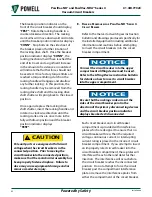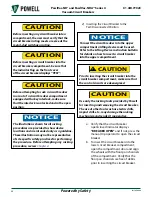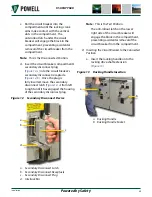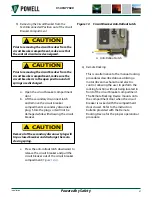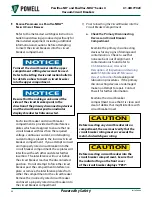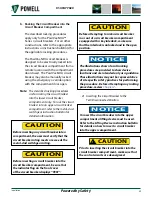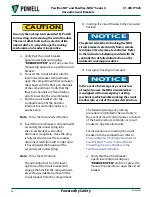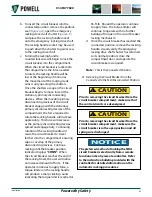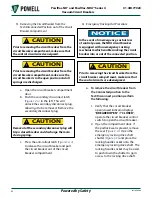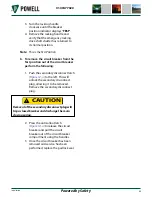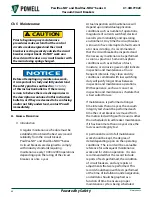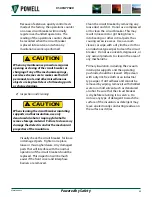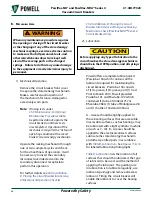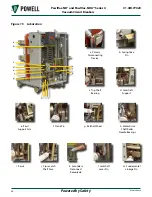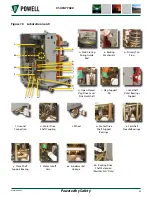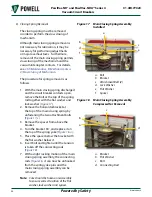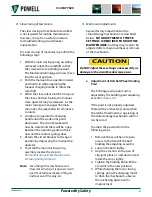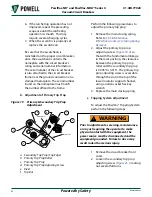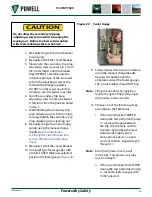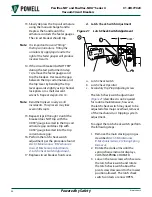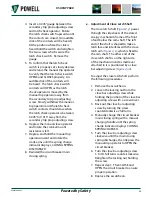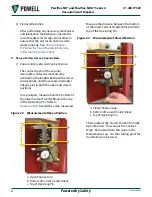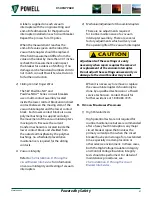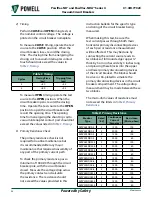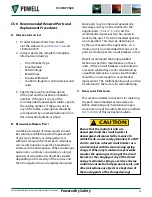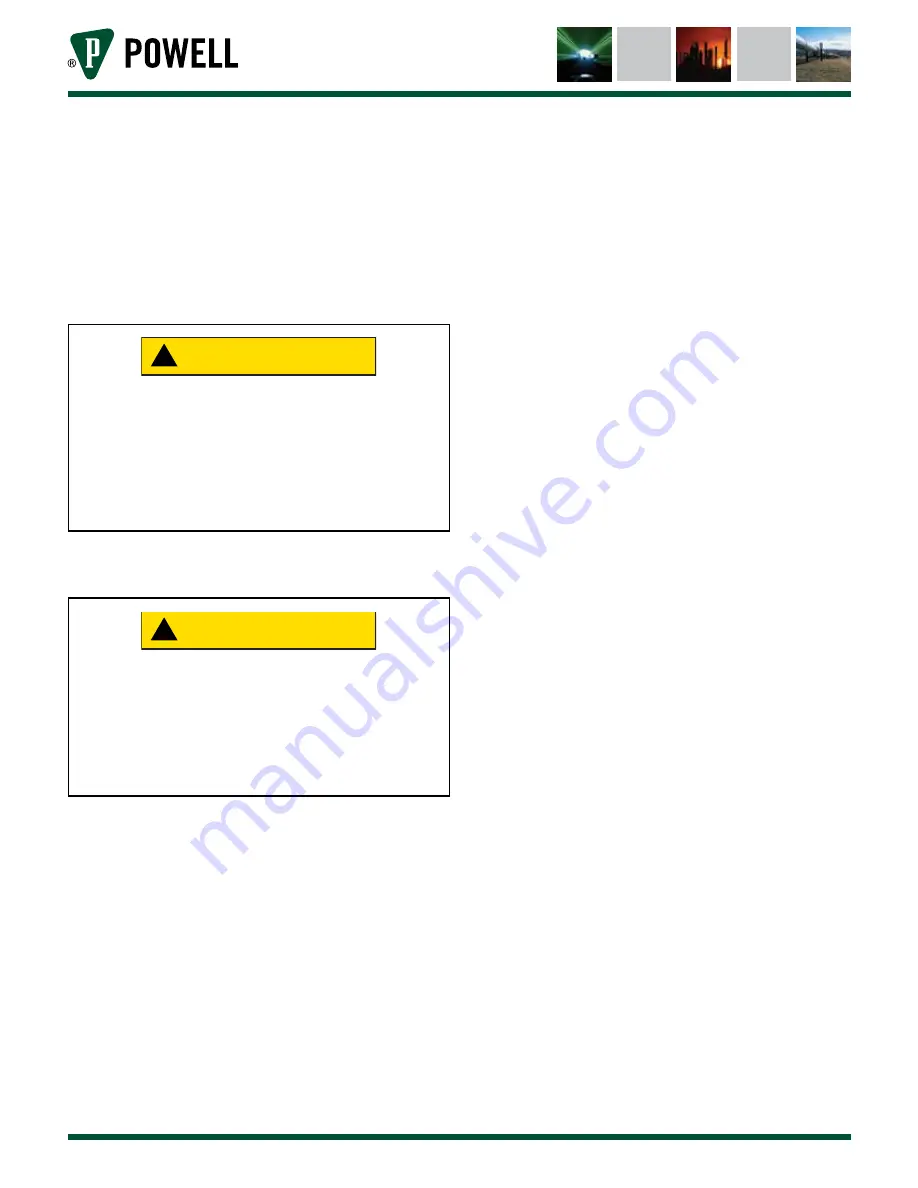
Powered by Safety
®
45
Maintenance
01.4IB.77020
Because of extensive quality control tests
made at the factory, the operations counter
on a new circuit breaker will normally
register over hundred operations. The
reading of the operations counter should
be recorded when the circuit breaker
is placed into service and when any
maintenance work is performed.
!
CAUTION
When any maintenance procedure requires
opening or closing of the circuit breaker or
charging of any of the mechanism springs,
exercise extreme care to make sure that all
personnel, tools, and other miscellaneous
objects are kept well clear of all moving parts
or charged springs.
2) Inspection and Cleaning
!
CAUTION
When cleaning the circuit breaker insulating
supports and bus insulation, use only
denatured alcohol or isopropyl alcohol to
remove foreign material. Failure to do so may
damage the dielectric and/or the mechanical
properties of the insulation.
Visually check the circuit breaker for loose
or damaged parts. Tighten or replace
loose or missing hardware. Any damaged
parts that will interfere with the normal
operation of the circuit breaker should be
replaced. This inspection will be much
easier if the front cover and interphase
barriers are removed.
Clean the circuit breaker by removing any
loose dust and dirt. Do not use compressed
air to clean the circuit breaker. This may
result in loose dirt or grit being blown
into bearings or other critical parts, thus
causing excessive wear. Use a vacuum
cleaner, or wipe with a dry lint-free cloth or
an industrial-type wiper to clean the circuit
breaker. Do not use solvents, degreasers, or
any aerosol products to clean in the area of
any mechanisms.
Primary insulation, including the vacuum
interrupter supports and the operating
pushrods, should be cleaned. Wipe clean
with a dry lint-free cloth or an industrial
type wiper. If dirt adheres and cannot be
removed by wiping, remove it with distilled
water or a mild solvent such as denatured
alcohol. Be sure that the circuit breaker
is dry before returning it to service. Do
not use any type of detergent to wash the
surface of the insulators as detergent may
leave an electrically conducting residue on
the surface as it dries.


